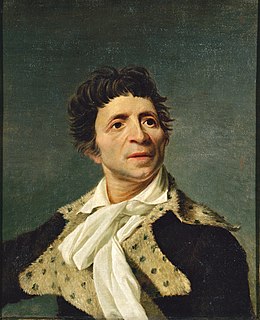
Jean-Paul Marat was a French political theorist, physician, and scientist. A journalist and politician during the French Revolution, he was a vigorous defender of the sans-culottes, a radical voice, and published his views in pamphlets, placards and newspapers. His periodical L'Ami du peuple made him an unofficial link with the radical Jacobin group that came to power after June 1793.

Marie-Anne Charlotte de Corday d'Armont, known as Charlotte Corday, was a figure of the French Revolution. In 1793, she was executed by guillotine for the assassination of Jacobin leader Jean-Paul Marat, who was in part responsible for the more radical course the Revolution had taken through his role as a politician and journalist. Marat had played a substantial role in the political purge of the Girondins, with whom Corday sympathized. His murder was depicted in the painting The Death of Marat by Jacques-Louis David, which shows Marat's dead body after Corday had stabbed him in his medicinal bath. In 1847, writer Alphonse de Lamartine gave Corday the posthumous nickname l'ange de l'assassinat.

The Persecution and Assassination of Jean-Paul Marat as Performed by the Inmates of the Asylum of Charenton Under the Direction of the Marquis de Sade, usually shortened to Marat/Sade, is a 1963 play by Peter Weiss. The work was first published in German.
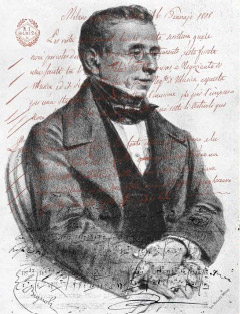
Casa Ricordi is a publisher of primarily classical music and opera. Its classical repertoire represents one of the important sources in the world through its publishing of the work of the major 19th-century Italian composers such as Gioachino Rossini, Gaetano Donizetti, Vincenzo Bellini, Giuseppe Verdi, and, later in the century, Giacomo Puccini, composers with whom one or another of the Ricordi family came into close contact.

Louis Gustave le Doulcet, comte de Pontécoulant was a French politician. He was the father of Louis Adolphe le Doulcet and Philippe Gustave le Doulcet.

La serva padrona, or The Maid Turned Mistress, is a 1733 intermezzo by Giovanni Battista Pergolesi (1710–1736) to a libretto by Gennaro Federico, after the play by Jacopo Angello Nelli. It is some 40 minutes long, in two parts without overture, and was written as light-hearted staged entertainment between the acts of Pergolesi's serious opera Il prigionier superbo. More specifically each of the two parts, set in the same dressing room, played during an intermission of the three-act opera to amuse people who remained in their seats.

The Death of Marat is a 1793 painting by Jacques-Louis David depicting the artist's friend and murdered French revolutionary leader, Jean-Paul Marat. One of the most famous images from the era of the French Revolution, David painted it when he was the leading French Neoclassical painter, a Montagnard, and a member of the revolutionary Committee of General Security. Created in the months after Marat's death, the painting shows Marat lying dead in his bath after his murder by Charlotte Corday on 13 July 1793. Art historian T. J. Clark called David's painting the first modernist work for "the way it took the stuff of politics as its material, and did not transmute it".

Lorenzo Ferrero is an Italian composer, librettist, author, and book editor. He started composing at an early age and has written over a hundred compositions thus far, including twelve operas, three ballets, and numerous orchestral, chamber music, solo instrumental, and vocal works. His musical idiom is characterized by eclecticism, stylistic versatility, and a neo-tonal language.

La Révolution française is a two-part 1989 historical film co-produced by France, Germany, Italy, the United Kingdom and Canada for the 200th anniversary of the French Revolution. The full film runs at 360 minutes, but the edited-for-television version is slightly longer. It purports to tell a faithful and neutral story of the Revolution, from the calling of the Estates-General to the death of Maximilien de Robespierre. The film had a large budget and boasted an international cast. It was shot in French, German and English.
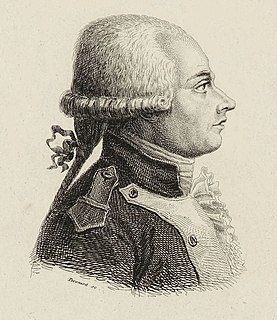
Antoine-François Momoro was a French printer, bookseller and politician during the French Revolution. An important figure in the Cordeliers club and in Hébertisme, he is the originator of the phrase ″Unité, Indivisibilité de la République; Liberté, égalité, fraternité ou la mort″, one of the mottoes of the French Republic.
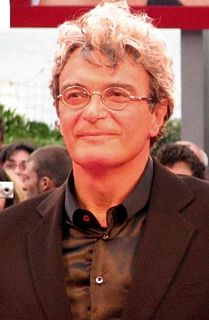
Mario Martone is an Italian film director and screenwriter. He has directed more than 30 films since 1985. His film L'amore molesto was entered into the 1995 Cannes Film Festival. His 2010 film Noi credevamo competed for the Golden Lion at the 67th Venice International Film Festival. He was also the stage director for Lorenzo Ferrero's opera Charlotte Corday, which was premiered at Teatro dell'Opera di Roma on 21 February 1989.
La Révolution Française is a French rock opera by Claude-Michel Schönberg and Raymond Jeannot, book by Alain Boublil and Jean-Max Rivière, created in 1973. The show premiered at the Palais des Sports de Paris.
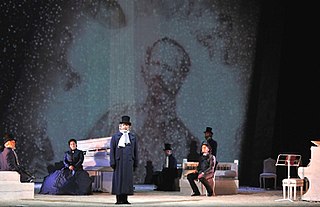
Risorgimento! is an opera in one act by Lorenzo Ferrero set to an Italian-language libretto by Dario Oliveri, based on a scenario by the composer. It was completed in 2010 and first performed at the Teatro Comunale Modena on 26 March 2011.
Mare nostro is a comic opera in two acts composed by Lorenzo Ferrero to an Italian-language libretto by Marco Ravasini, loosely based on Vittorio Alfieri's 1804 comedy L'antidoto . The work was completed in 1985 and first performed at the Teatro Comunale, Alessandria on 11 September 1985.
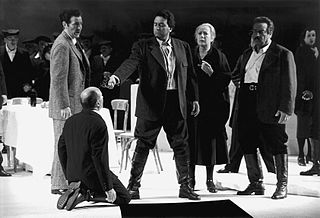
Salvatore Giuliano is an opera in one act by Lorenzo Ferrero to an Italian-language libretto by Giuseppe Di Leva, which was conceived to be performed in tandem with Pietro Mascagni's Cavalleria rusticana. The work was commissioned by the Teatro dell'Opera di Roma and premiered there on 25 January 1986.
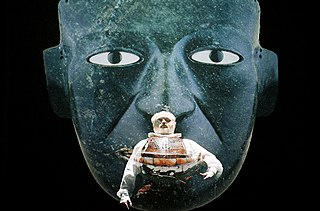
La Conquista is an opera in two acts by Lorenzo Ferrero set to a trilingual libretto by the composer and Frances Karttunen, based on a concept by Alessandro Baricco. It depicts the major episodes of the Spanish conquest of the Aztec Empire in 1521 and the subsequent destruction of the Aztec civilization. The libretto (English-Spanish-Nahuatl) is a blend of historical and literary sources drawn from transcriptions of indigenous and European literature, both kept, with some exceptions, in their original languages. The texts are taken from The Truthful History of the Conquest of New Spain by Bernal Díaz del Castillo, the Book XII of the Florentine Codex, the works of Juan Boscán Almogáver, Bernardino de Sahagún, Lope de Vega, Heinrich Heine, and from Aztec prayers, songs and poems as collected in Cantares Mexicanos and Romances de los señores de Nueva España.
La figlia del mago is a children's opera in two acts by Lorenzo Ferrero set to an Italian-language libretto by Marco Ravasini. It was completed in 1981 and subtitled giocodramma melodioso, a wordplay on melodramma giocoso. The libretto, inspired by Mario Lavagetto's book Quei più modesti romanzi: il libretto nel melodramma di Verdi, is written in an imaginary language which emphasises the element of play. The music is a sequence of closed numbers "which spoof the most common operatic conventions." The aim of the opera is to show children how Italian opera functions. Alongside professional singers, children take mime roles.
Marilyn: Scenes from the '50s in two acts, is an opera by Lorenzo Ferrero set to a bilingual libretto by Floriana Bossi and the composer. The text consists of a collection of fragments taken from original political, social and cultural documents and has two different linguistic levels: English for the sung parts, and the language of the country in which the performance takes place for the spoken parts.
Le piccole storie, subtitled Ai margini delle guerre, is a one-act chamber opera for young people by Lorenzo Ferrero set to an Italian-language libretto by Giuseppe Di Leva. Some episodes are loosely based on Guy de Maupassant's 1884 short story "Le Lit 29" and on William Shakespeare's play Julius Caesar. The stories do not touch directly upon the subject of war but depict moments in the lives of involuntary victims who subsist, as the subtitle suggests, on the margins of wars.














